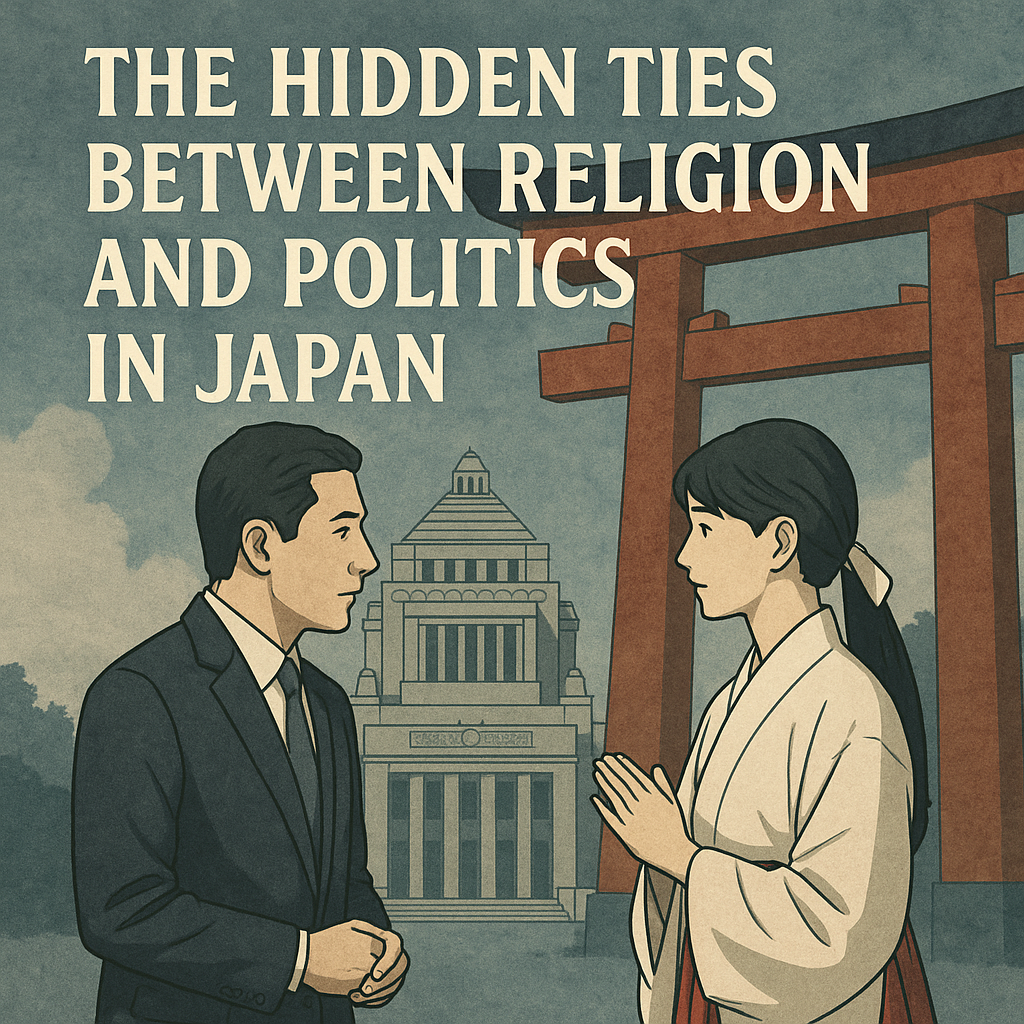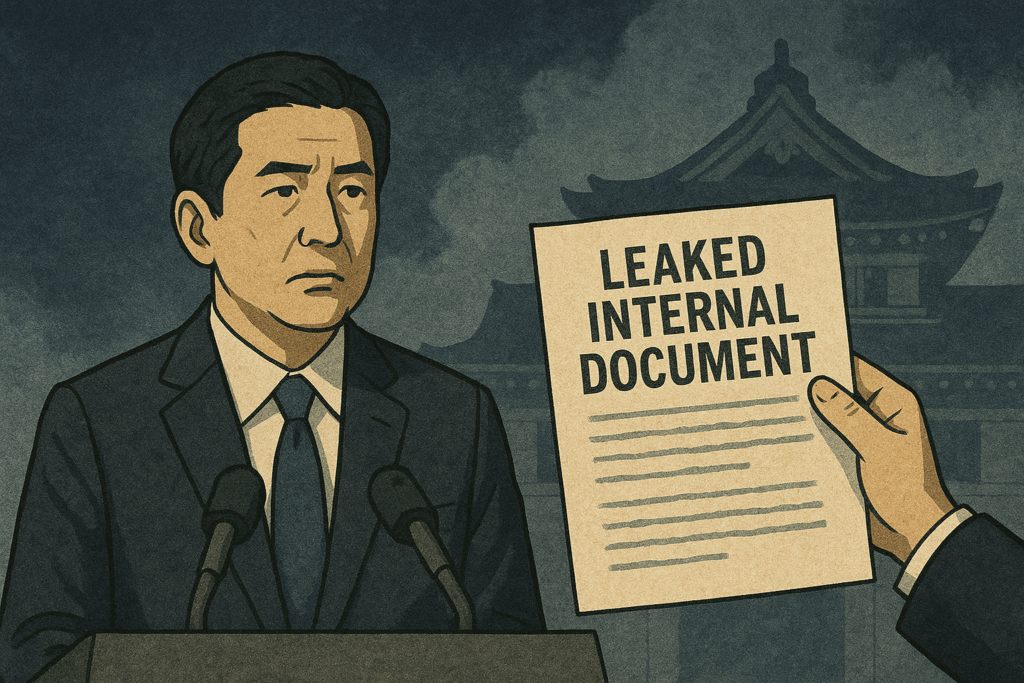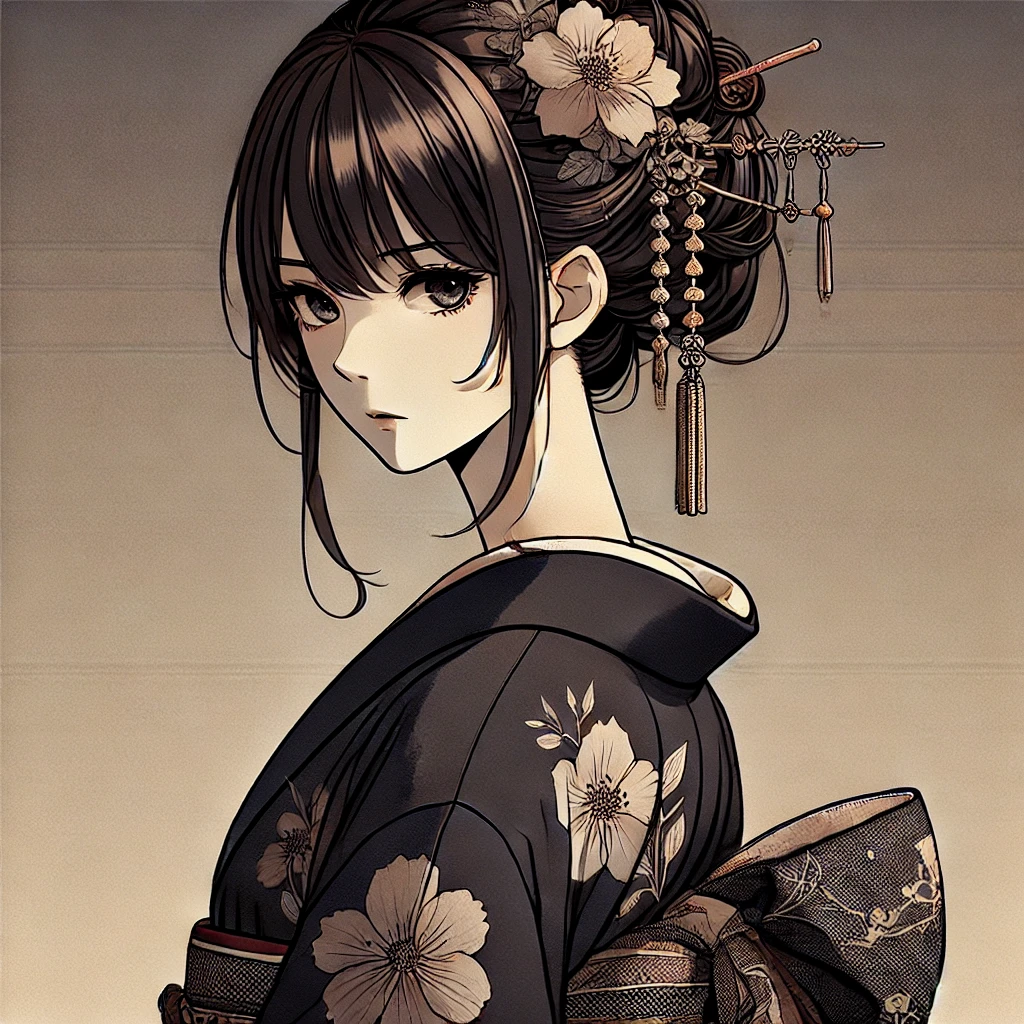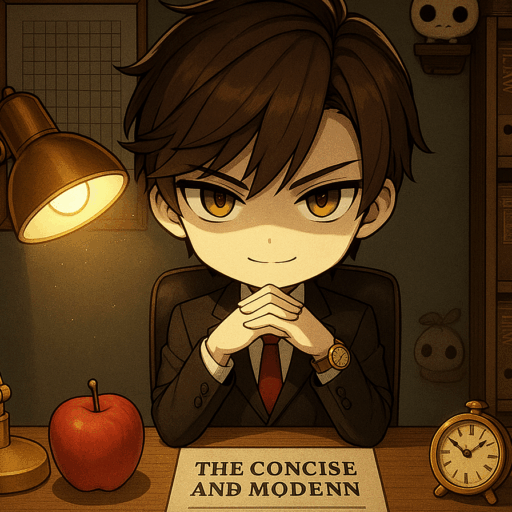- Introduction: Should Religion and Politics Intersect?
- Chapter 1: Election Support and Leaked Internal Documents
- Chapter 2: Overview of Amaterasu Koutaijingu-kyo
- Chapter 3: The “Prophecy” About PM Nobusuke Kishi
- Chapter 4: Kitamura Tsuneo’s Political Rise
- Chapter 5: The Group’s Official Stance and Public Perception
- Chapter 6: Rethinking the Distance Between Religion and Politics
- Chapter 7: Evangelism and Social Friction
- Conclusion: A Time to Make Hidden Connections Visible
Introduction: Should Religion and Politics Intersect?
In modern Japan, the principle of separation of religion and state is officially upheld. However, in reality, ties between specific religious groups and political figures often become the subject of public discussion. This article focuses on the Shinto-based new religion Amaterasu Koutaijingu-kyo and its lesser-known connections with Japanese politicians, shedding light on these hidden relationships.

Chapter 1: Election Support and Leaked Internal Documents
During the 2013 Upper House election, a document emerged suggesting that the Unification Church (now known as the Family Federation for World Peace and Unification) was asked to support a candidate named Kitamura.
The document even mentioned it was a “direct request from Prime Minister Shinzo Abe”, sparking debate over possible “collaborations” between religious organizations.
While both Kitamura and the religious group refrained from making official statements, the incident drew attention to the crossroads of religion and politics.
💡Religion and Politics in Japan: Soka Gakkai, Shinto, and the Unification Church Explained‼️
Chapter 2: Overview of Amaterasu Koutaijingu-kyo
- Founded: 1947 in Tabuse, Yamaguchi Prefecture
- Founder: Sayo Kitamura (1900–1967)
- Teachings: Emphasizes “selflessness” (muga) and spiritual unity between humans and gods
- Rituals: Known for the mystical “Dance of Selflessness” (muga no mai)
- Followers: Approximately 490,000 (as of 2021)
Dubbed a “dancing religion,” it is known for both its mystique and insular structure.

Chapter 3: The “Prophecy” About PM Nobusuke Kishi
Shortly after World War II, founder Sayo Kitamura reportedly told Nobusuke Kishi that he would become prime minister within 10 years. True enough, Kishi took office in 1957.
This prediction helped establish a close relationship between the Kishi and Kitamura families, a bond still discussed in their hometown of Tabuse.
While this story has been linked to conspiracy theories like the “Tabuse System,” this article presents only the verifiable parts of the narrative.
Inside the Kenshokai: Structure, Rules, and Daily Life of Its Followers
Chapter 4: Kitamura Tsuneo’s Political Rise
Tsuneo Kitamura, the grandson of founder Sayo Kitamura, was first elected to the House of Councillors in 2013.
- Former journalist at Sankei Shimbun
- Member of the LDP’s Seiwa Seisaku Kenkyukai (Abe faction)
- Reportedly received support from the religious organization
There are accounts suggesting that followers were mobilized during his campaign. While it’s unclear whether his political stance was shaped by religious influence, his background as the grandson of a religious founder remains noteworthy.
Chapter 5: The Group’s Official Stance and Public Perception
Amaterasu Koutaijingu-kyo publicly maintains that “religious and political activities are unrelated.”
- The group emphasizes peace and devotion to divinity
- It claims to have no involvement in political campaigning
However, connections between religious leaders and political figures—and electoral support from believers—are often regarded as “personal freedoms,” leading to a gray-zone perception in public discourse.

Chapter 6: Rethinking the Distance Between Religion and Politics
Like Soka Gakkai’s connection to Komeito, links between religious groups and political entities exist in Japan. In the case of Amaterasu Koutaijingu-kyo, its role appears to be more behind-the-scenes, but the familial ties and prophetic narratives surrounding its figures have drawn considerable attention.
Faith is meant to be a personal choice. Yet when it intersects with political power, public scrutiny naturally intensifies.
Chapter 7: Evangelism and Social Friction
The group’s public activities—such as posters in government buildings and pamphlet distribution on the streets—have triggered discomfort in some communities.
There are also reports of overzealous evangelism straining interpersonal relationships.
While freedom of religion is guaranteed, moderation and empathy are essential in religious outreach.

Conclusion: A Time to Make Hidden Connections Visible
Today, the actions of religious organizations are being examined more openly than ever before. Faith itself is not a vice—but its influence on politics and society should be critically assessed.
As religion and political power continue to intersect, society must develop a sharper eye for where the line should be drawn.



